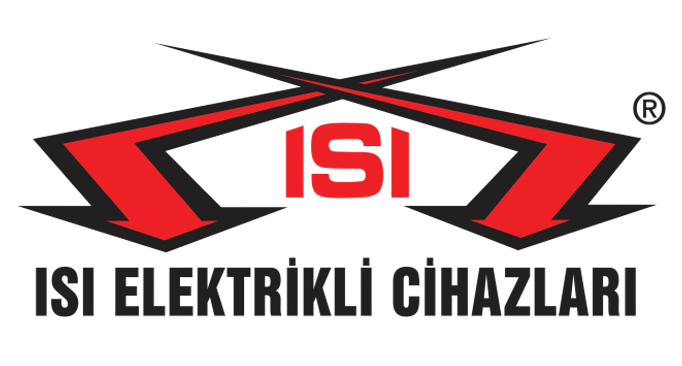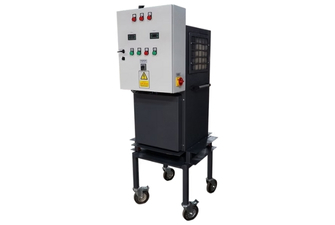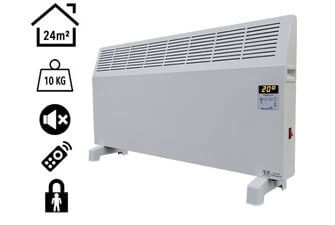Ambient Heating Systems
Indoor Heating Systems
In modern spaces, efficient, safe, and aesthetic heating revolves around two core technologies: electric convector heaters and fan-assisted heating systems. Convector units deliver silent, even warmth via natural air circulation; fan systems propel heated air rapidly for immediate thermal comfort. Heatbox unites both technologies under domestic manufacturing quality and advanced engineering to maximize performance, energy efficiency, and user safety.
Operating Principles: Convection vs. Forced Air
Electric convectors draw cool air from below, heat it over the element, and release it from the top through natural buoyancy—no fan noise, a stable temperature profile, and long-duration comfort.
Fan heaters generate warm air at the heat source (electric element or, in certain industrial cases, gas burner) and actively circulate it with a fan. This delivers a rapid temperature rise in high-ceiling or large-volume areas and responds swiftly to sudden demand.
The Heatbox Approach
- Convector lines: precise thermostatic control for stable temperatures and low consumption.
- Fan lines: optimized ducts and efficient motors for fast, even distribution.
- Both lines: overheat protection, tip-over safety (where applicable), and IP ratings for robust safety.
Advantages: Quiet Comfort or Instant Heat?
Convector heaters excel in silent, draft-free comfort—ideal for bedrooms, studies, and continuous use. Thermostats maintain the target setpoint to avoid waste.
Fan systems shine in speed and responsiveness. Retail floors, workshops, warehouses, and sports venues benefit from quick results. Multi-stage power and fan control fine-tune output to the need.
Which Scenario Fits Which?
- Quiet, long-run, uniform warmth: Electric convectors
- Fast ramp-up, large spaces, on-demand: Fan heaters
- Hybrid support to central plants: Choose per zone and schedule
Use Cases: Residential, Commercial, Industrial
Convectors suit homes, offices, clinics, boutiques, and libraries where silence and comfort matter. Wall-mount or freestanding options match room sizes from small to mid-range.
Fan heaters serve stores, restaurants, workshops, warehouses, showrooms, events, and sports areas where on-demand heating is essential. Industrial three-phase models at 380–400V provide high airflow and rapid transfer.
Model Selection Tips
- Room size: 3–8 m² with low-watt convectors; 12–28 m² with mid-high watt. Large volumes: industrial fan solutions.
- Usage profile: Long, quiet sessions (convectors) vs. quick bursts (fans).
- Mounting and mobility: Wall/ceiling fixed or portable chassis.
Energy Efficiency and Savings
Convector thermostats cut power at setpoint and resume only as needed. Fan units save energy with multi-stage power and timers that eliminate idle runtime. Good insulation, right-sizing, and scheduled operation reduce bills and footprint across both technologies.
Heatbox Efficiency Stack
- High-efficiency elements and optimized air paths.
- Low-consumption, high-throughput fan motors.
- Accurate thermostats, timers, and safe shutdown logic.
Safety, Durability, and Maintenance
Both technologies incorporate overheat protection, tip-over safety (model-specific), and IP ratings. Metal enclosures enhance impact resistance and lifespan. Maintenance is simple: keep grilles and ducts dust-free, avoid blocking airflow, and wipe with a damp cloth.
Customer Satisfaction and Warranty
- 2-year warranty and broad service coverage.
- Spare-parts availability with domestic manufacturing.
- Continuous improvements driven by user feedback.
Eco-Friendly and Healthy Heating
No combustion means no CO or NOx and no odor—better indoor air quality. When powered by renewables, operational emissions approach zero. Non-burning designs protect respiratory comfort during prolonged use.
Create Warm and Comfortable Spaces with Heatbox
Heatbox convector lines target “natural comfort” with silent, even heat, while fan lines target “speed and coverage” for large areas. Domestic R&D, modern design, and rigorous safety yield measurable efficiency, trust, and aesthetics across homes, commercial venues, and industry.
Comparative Performance Analysis
In indoor heating systems, performance is not determined solely by power ratings, but also by heat distribution, response time, temperature stability, and energy efficiency. Electric convector heaters and fan-assisted systems offer different strengths across these factors.
Convector systems operate silently, circulate air naturally, and create a stable temperature without hot or cold spots. Thermostatic control maintains the set temperature, allowing the unit to activate only when needed, which significantly improves energy efficiency during long periods of use.
Fan systems, on the other hand, deliver heated air rapidly through high airflow. This makes them ideal for industrial facilities, shops, restaurants, and sports halls where fast heating of large spaces is required. With multi-stage power output, they can reach high performance levels instantly, providing rapid temperature rise.
Heating Type Comparison
- Convector: Silent operation, even heat distribution, low energy consumption, and long-term comfort.
- Fan: Rapid heating, wide coverage, adjustable power levels, and flexible control options.
The right choice depends on room size, usage duration, immediate heating needs, and budget. For example, a living room may benefit more from a convector, while a workshop or store might find a fan system more efficient.
Installation and Mobility Options
Heatbox provides user-friendly installation solutions for both systems. Convector heaters can be wall-mounted for a sleek fixed installation or used freestanding. Thanks to their lightweight structure, they can easily be moved between rooms, requiring only a standard electrical outlet.
Fan systems offer flexibility in both portable and fixed industrial models. Floor-standing units can be moved between different areas, while ceiling- or wall-mounted units provide permanent heating solutions for larger spaces.
- Wall mounting: Ideal for fixed, aesthetic convector installations.
- Ceiling mounting: Used for industrial fan units to distribute heat from above.
- Freestanding use: Great for homes and offices that require portability.
- Mobile fan units: Perfect for temporary use or easy movement between rooms.
Advanced Features: Bluetooth, Timers, and Smart Controls
Modern heating systems go beyond simply warming spaces—they enhance overall comfort with smart technologies. Heatbox enriches both convector and fan technologies with advanced features tailored to user needs.
- Bluetooth audio system: In fan fireplace models, users can enjoy music or ambient sounds while heating the space.
- Remote control: Adjust temperature, fan speed, flame effects, and timers without leaving your seat.
- Timers: Schedule heating periods or automatic shutdown to save energy.
- Precise thermostats: In convectors, thermostats keep room temperature stable by switching the system on and off as needed.
- Smart home integration: Voice assistant compatibility allows seamless integration with modern smart homes.
These features elevate the heating experience well beyond traditional devices, combining functionality with user comfort.
Field Scenarios and Sizing Examples
Choosing the right product begins with understanding the space and usage scenario. Below are example situations and recommended system types:
- 20 m² Living Room: A 2000–2500 W convector heater provides quiet, stable warmth.
- 60 m² Workshop: A 9000–18000 W three-phase industrial fan model ensures rapid and effective heating.
- Shop Entrance: A wall-mounted fan system creates a warm air barrier at entry points.
- Small Office (10 m²): A portable convector model is ideal for continuous use with low power consumption.
- Café Interior: A Bluetooth-enabled fan fireplace provides both heat and ambience.
These scenarios highlight how the two technologies complement each other. Convector systems excel in quiet, stable environments, while fan systems are ideal for rapid coverage in large or open spaces.
Design and Domestic Production Quality
In heating systems, not only technical performance but also design, safety, and production quality are crucial factors. Heatbox combines 100% domestic manufacturing power with modern design principles to offer long-lasting, aesthetic, and safe solutions in both convector and fan-assisted technologies.
Convector heaters feature slim profiles and decorative lines that complement interior design. Fan fireplace series are not just heaters but atmospheric elements: 3D flame effects, adjustable brightness, and sound systems add both warmth and elegance to any space.
In industrial fan models, the focus is on functionality: durable metal bodies, compact form, easy installation, and robust structure. All products include overheat protection, thermostat-based safety systems, and IP ratings as standard, demonstrating Heatbox’s commitment to production quality.
- Aesthetic Design: Convector and fireplace solutions that integrate with home and commercial interiors.
- Functional Structure: High performance, easy installation, and durability in industrial fan models.
- Domestic Production: R&D, design, and manufacturing are fully carried out in Türkiye, ensuring easy access to parts and service.
Eco-Friendly Technologies
Environmental awareness is becoming increasingly important in modern indoor heating systems. Since electric convector and fan systems operate without combustion, they do not emit carbon monoxide (CO) or nitrogen oxides (NOx). This reduces environmental impact and preserves indoor air quality.
Convector systems feature dust-free heating designs that do not dry the air even during long periods of operation. Fan systems with advanced airflow and distribution components spread heat evenly throughout the space, preventing condensation, humidity build-up, or unpleasant odors.
- Near-zero carbon footprint when powered by renewable energy.
- Oxygen-free heating technology for healthier indoor air.
- Odorless and condensation-free heating.
Maintenance and Durability
Both convector and fan-assisted systems are known for their low maintenance requirements. Cleaning simply involves turning off and unplugging the device, then wiping it with a soft, damp cloth. Keeping air inlets and outlets dust-free maintains performance for many years.
For fan systems, keeping fan blades and air ducts unobstructed is essential. For convector heaters, ensuring that grilles remain clear is sufficient for efficient operation.
- Metal housing provides strong impact resistance and long-lasting durability.
- Heating elements use long-life resistance technology.
- Fan motors offer high airflow with low power consumption.
Hybrid Heating Scenarios
Many users combine convector and fan systems based on the layout of their spaces to maximize efficiency. This hybrid approach is particularly effective in commercial buildings with mixed zones or in larger homes.
- Fan by Day – Convector by Night: Fan systems provide fast daytime heating, while convectors ensure quiet and balanced comfort at night.
- Entrance vs. Interior: Fan systems create a warm barrier at entrances, while convectors maintain even temperatures indoors.
- Supporting Central Systems: Fan systems deliver quick boosts when the central system is insufficient, while convectors maintain the temperature efficiently.
This combination increases energy savings while addressing the specific needs of different zones. It also balances investment costs by using the right technology in the right place instead of relying on a single type of system for the entire building.
Heatbox’s Role in Indoor Heating Systems
Heatbox offers a comprehensive product portfolio for electric convector heaters and fan-assisted systems across residential, commercial, and industrial scales. Silent, balanced, and elegant convector lines are complemented by fast, powerful, and feature-rich fan systems. This dual-technology approach differentiates Heatbox from brands that rely on a single system type.
By combining domestic manufacturing, modern engineering, energy efficiency, advanced safety mechanisms, and design aesthetics, Heatbox meets both technical and stylistic expectations. Whether it’s an office, warehouse, or home, there’s a Heatbox heating solution for every space.
- Comprehensive Product Range: Convector, fan, fireplace-style, and industrial solutions.
- Local Engineering: Developed in Türkiye with easy access to service and spare parts.
- Long-Term Investment: Durable structures and energy-saving components.
Ultimately, under the umbrella of “Indoor Heating Systems,” Heatbox brings together the advantages of two different technologies to deliver four key promises to users: comfort, speed, safety, and efficiency. This holistic approach ensures optimal heating conditions in every space during the winter months.


